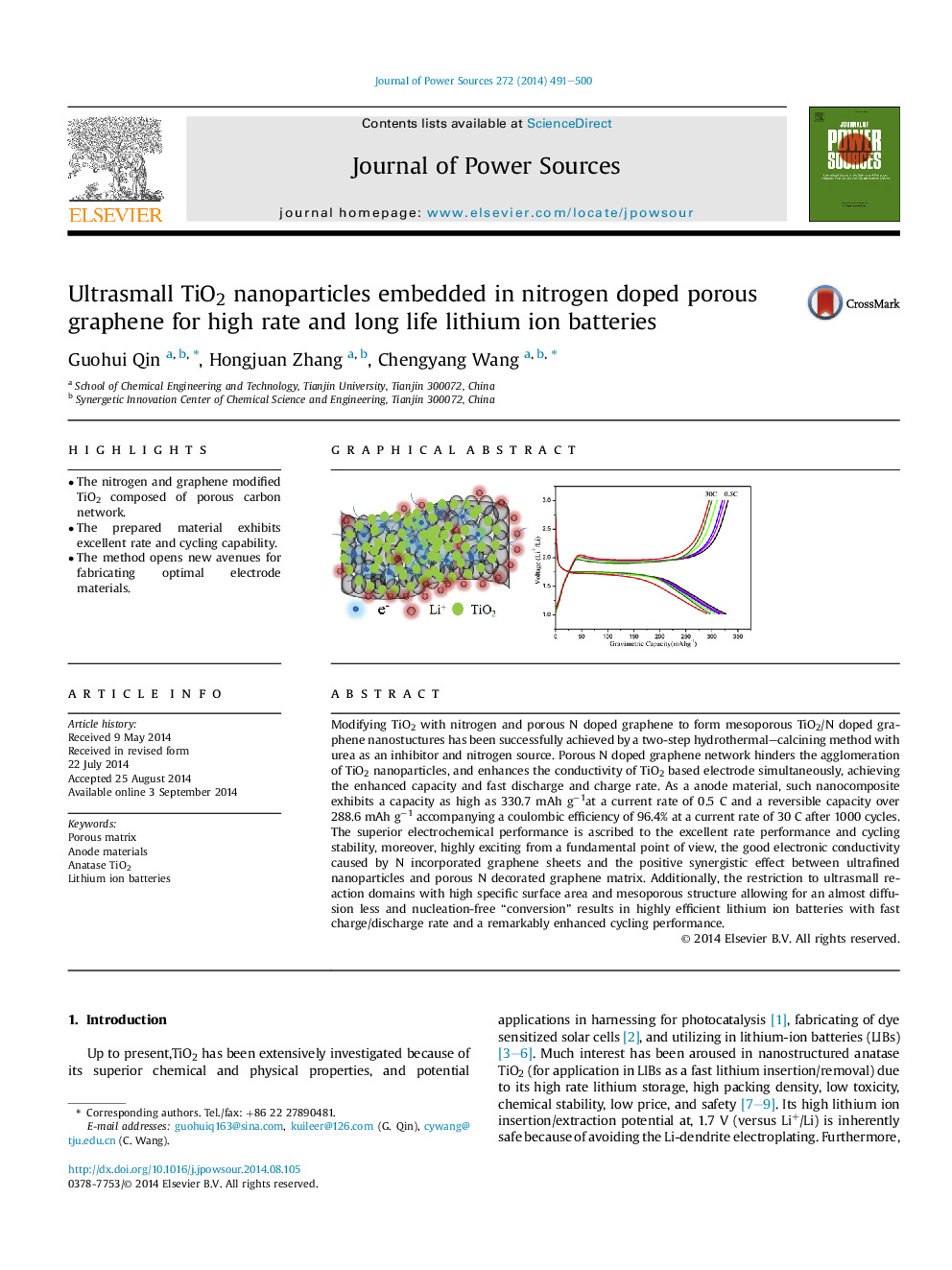| Article ID | Journal | Published Year | Pages | File Type |
|---|---|---|---|---|
| 1283991 | Journal of Power Sources | 2014 | 10 Pages |
•The nitrogen and graphene modified TiO2 composed of porous carbon network.•The prepared material exhibits excellent rate and cycling capability.•The method opens new avenues for fabricating optimal electrode materials.
Modifying TiO2 with nitrogen and porous N doped graphene to form mesoporous TiO2/N doped graphene nanostuctures has been successfully achieved by a two-step hydrothermal–calcining method with urea as an inhibitor and nitrogen source. Porous N doped graphene network hinders the agglomeration of TiO2 nanoparticles, and enhances the conductivity of TiO2 based electrode simultaneously, achieving the enhanced capacity and fast discharge and charge rate. As a anode material, such nanocomposite exhibits a capacity as high as 330.7 mAh g−1at a current rate of 0.5 C and a reversible capacity over 288.6 mAh g−1 accompanying a coulombic efficiency of 96.4% at a current rate of 30 C after 1000 cycles. The superior electrochemical performance is ascribed to the excellent rate performance and cycling stability, moreover, highly exciting from a fundamental point of view, the good electronic conductivity caused by N incorporated graphene sheets and the positive synergistic effect between ultrafined nanoparticles and porous N decorated graphene matrix. Additionally, the restriction to ultrasmall reaction domains with high specific surface area and mesoporous structure allowing for an almost diffusion less and nucleation-free “conversion” results in highly efficient lithium ion batteries with fast charge/discharge rate and a remarkably enhanced cycling performance.
Graphical abstractFigure optionsDownload full-size imageDownload as PowerPoint slide
